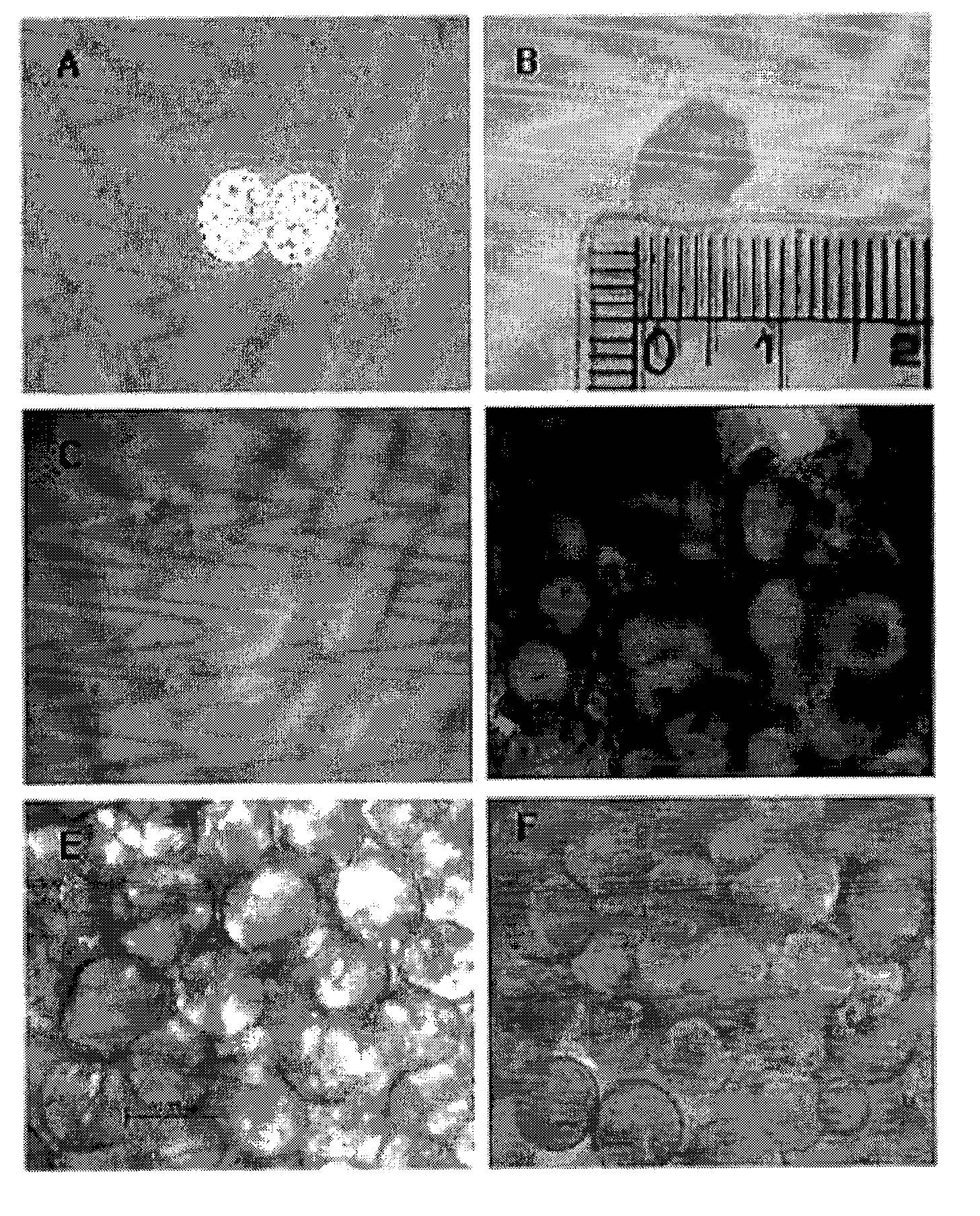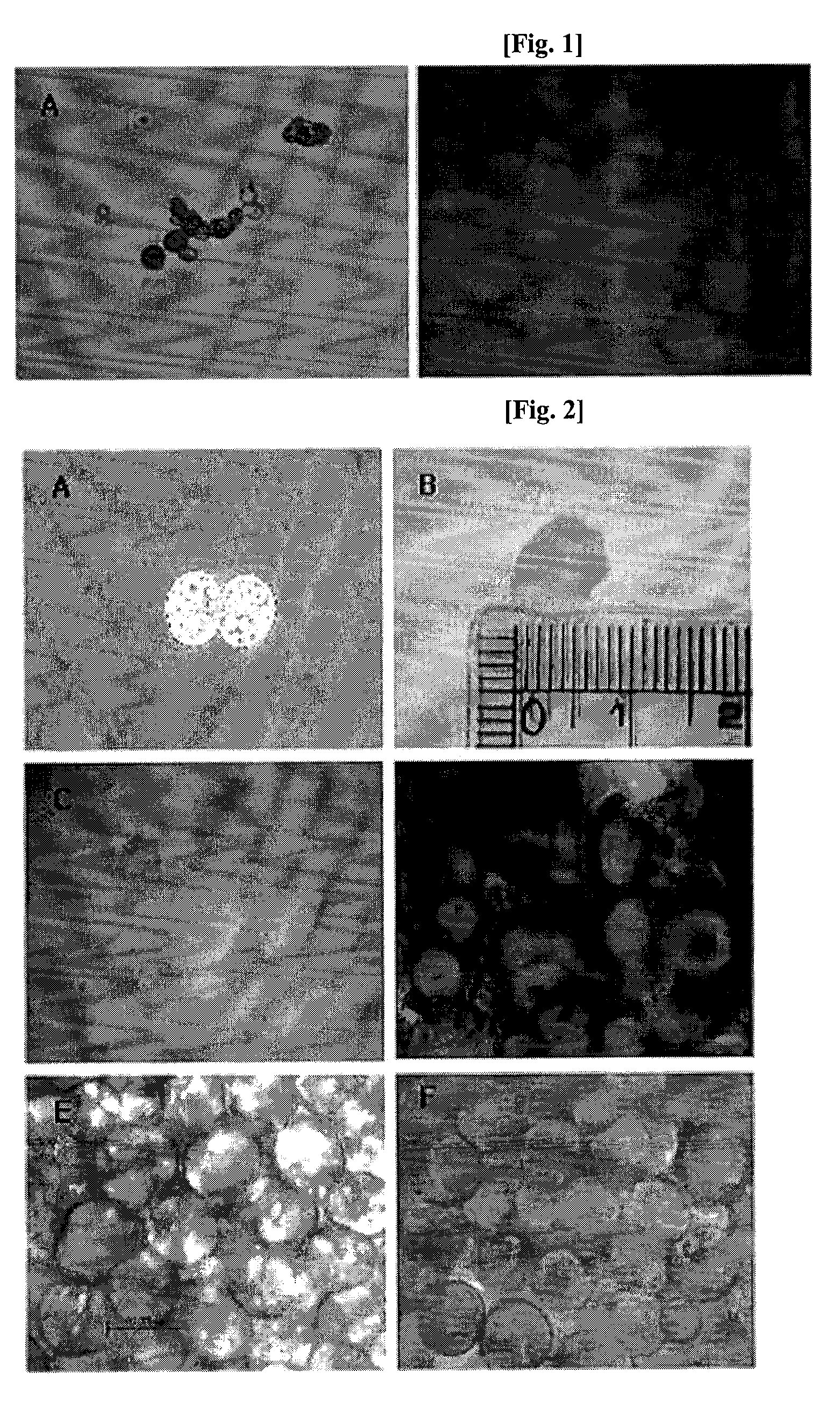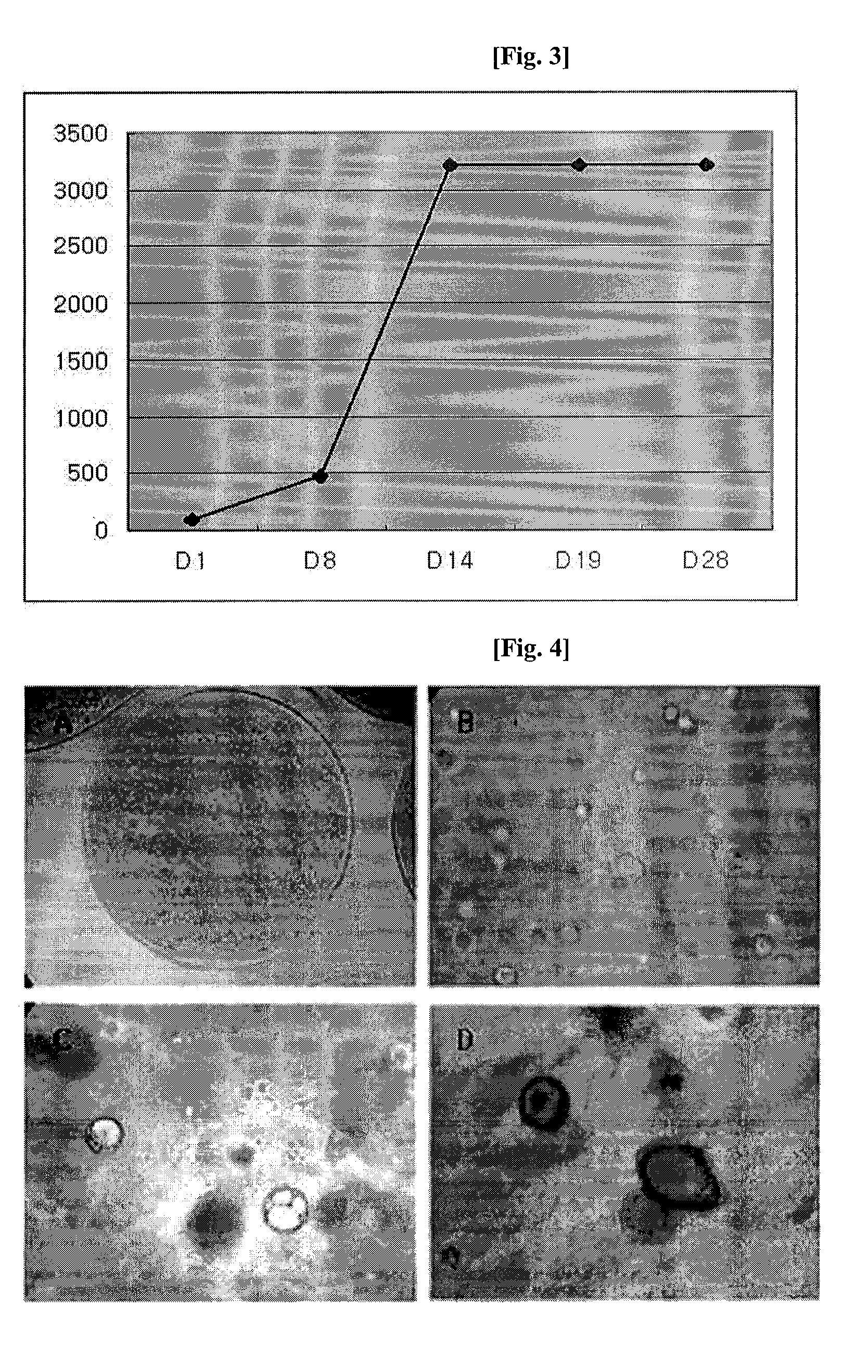Transplantation of Differentiated Immature Adipocytes and Biodegradable Scaffold for Tissue Augmentation
a biodegradable scaffold and differentiation technology, applied in the field of tissue augmentation transplantation of differentiated immature adipocytes and biodegradable scaffolds, can solve the problems of reducing the engraft rate, no satisfactory, and disappointing results, and achieves superior survival rate and engraft rate, and gradual volume increase
- Summary
- Abstract
- Description
- Claims
- Application Information
AI Technical Summary
Benefits of technology
Problems solved by technology
Method used
Image
Examples
example 1
Production of Immature Adipocytes
[0070]Firstly, preadipocytes were isolated from adipose tissues obtained via liposuction as follows: in order to remove blood, the adipose tissues were washed 3 or 4 times with the same volume of a KRB solution. The same volume of a collagenase solution as that of the adipose tissues was added thereto and the materials were reacted in a water bath at 37° C. The resulting reaction solution was transferred to a centrifugal tube and centrifuged at 1200 rpm and 20° C. for 10 minutes. The lipid and fat layer as the supernatant were removed, and the lower layer, i.e. a collagenase solution was carefully separated without being shaken. A stromal medium was suspended therein, followed by centrifugation at 1200 rpm and 20° C. for 5 minutes. Here, preadipocytes were allowed to settle and the supernatant were removed.
[0071]The thus-obtained preadipocytes were suspended in the stromal medium, inoculated into a culture vessel, and cultured in a 5% CO2 incubator a...
example 2
Engrafting of Immature Adipocytes into Scaffold and Co-Culture Thereof
[0076](1) Harvesting of Differentiated Immature Adipocytes
[0077]A trypsin / EDTA solution was added to a flask containing immature adipocytes which were produced in Example 1. The resulting mixture was reacted in an incubator for 1 to 15 minutes and DMEM / F12 was added thereto, thereby inactivating the trypsin / EDTA solution.
[0078]The solution was collected and then centrifuged at 1200 rpm and 20° C. for 5 minutes. The supernatant was removed and a shipping medium (phenol red-free DMEM) was added to suspend the cells, and the mixture was centrifuged once again under the same conditions as above. The supernatant was removed and an appropriate amount of the shipping medium was added, followed by cell counting. The amount of the shipping medium which will be finally added was calculated and centrifugation was repeated again.
[0079]FIG. 1 is a micrograph (×400) showing a size of differentiated immature adipocytes and matur...
example 3
Co-Transplantation of Immature Adipocytes with scaffold
[0090]A fibrinogen solution and a thrombin solution were prepared 10 minutes prior to use, as follows: an aprotinin solution was placed in a vial containing lyophilized fibrinogen, which was then allowed to stand for 1 to 2 minutes and gently shaken to be completely dissolved, followed by filling it in a syringe. The thrombin solution was prepared by placing a calcium chloride solution in a vial containing thrombin and shaking the vial until the contents were completely dissolved.
[0091]The thrombin solution was added to immature adipocytes obtained by removing the supernatant after final centrifugation in Step (1) of Example 1, such that cells were suspended to a concentration of 1 to 5×107 cells / ml and the resulting suspension was filled in another syringe. The syringe filled with the fibrinogen solution and the syringe filled with the thrombin-cell suspension were respectively connected to the corresponding parts of a dual syr...
PUM
| Property | Measurement | Unit |
|---|---|---|
| cell diameter | aaaaa | aaaaa |
| diameter | aaaaa | aaaaa |
| size | aaaaa | aaaaa |
Abstract
Description
Claims
Application Information
 Login to View More
Login to View More - R&D
- Intellectual Property
- Life Sciences
- Materials
- Tech Scout
- Unparalleled Data Quality
- Higher Quality Content
- 60% Fewer Hallucinations
Browse by: Latest US Patents, China's latest patents, Technical Efficacy Thesaurus, Application Domain, Technology Topic, Popular Technical Reports.
© 2025 PatSnap. All rights reserved.Legal|Privacy policy|Modern Slavery Act Transparency Statement|Sitemap|About US| Contact US: help@patsnap.com



